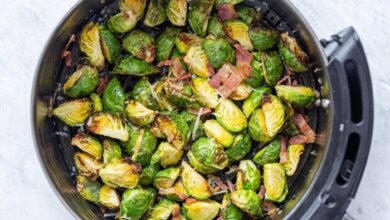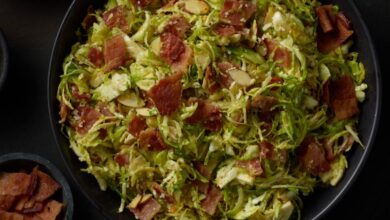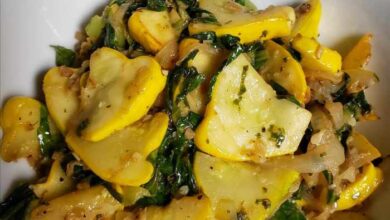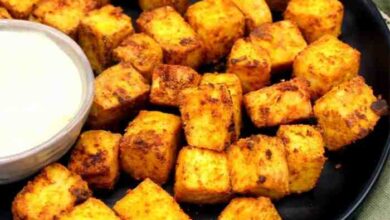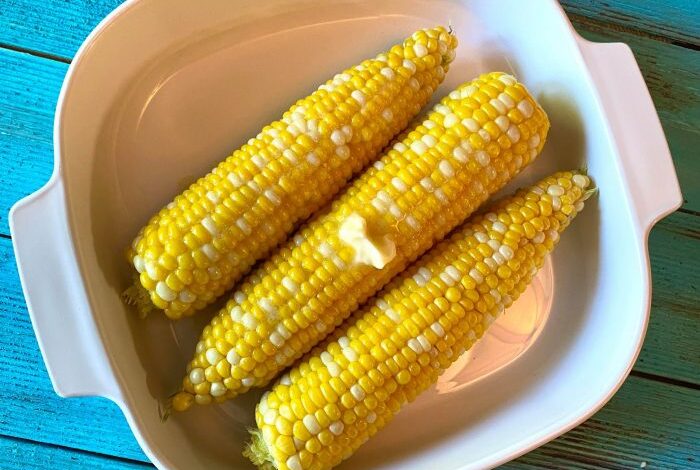
Corn on the Cob in the Microwave: A Quick and Easy Guide
Corn on the cob in the microwave is a quick and easy way to enjoy this summer staple. It’s a perfect solution for busy weeknights, picnics, or even a simple side dish for any meal. Whether you’re a seasoned cook or just starting out, this method is incredibly versatile and can be adapted to your preferences.
The key to success is understanding the science behind microwave cooking and utilizing the right techniques. We’ll explore the different methods for cooking corn on the cob in the microwave, including using a microwave-safe bag or a steamer basket.
We’ll also provide tips for achieving even cooking and preventing overcooking, along with a table comparing cooking times and power levels for various microwave models. You’ll be able to adjust cooking times based on your specific microwave and desired level of doneness.
Microwave Basics
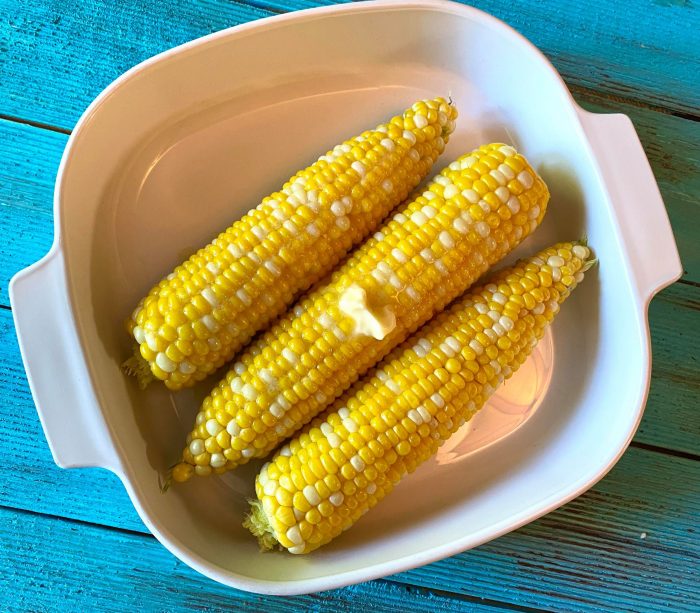
Microwaves are a form of electromagnetic radiation that can be used to cook food. They work by exciting water molecules in food, causing them to vibrate rapidly and generate heat. This process is known as dielectric heating.
Understanding How Microwaves Cook Food
Microwaves are a type of electromagnetic radiation with a specific frequency that can penetrate food. When these waves encounter water molecules, they cause the molecules to vibrate rapidly, generating heat. This heat is what cooks the food.
Microwave corn on the cob is a quick and easy weeknight dinner staple, but sometimes you want to spice things up! For a kick of flavor, try dipping your corn in a spicy spicy ranch dressing – the creamy base with a fiery punch will elevate your corn to a whole new level.
The heat from the dressing complements the sweetness of the corn perfectly, making it a satisfying and flavorful meal.
Preparing Corn on the Cob for Microwave Cooking
Preparing corn on the cob for microwave cooking is a simple process that involves a few steps.
Steps
- Remove Husks and Silk:Start by removing the husks and silk from the corn.
- Wrap in a Paper Towel:Wrap the corn in a damp paper towel. This helps to create steam and ensure even cooking.
- Place in Microwave-Safe Container:Place the wrapped corn in a microwave-safe container or bowl.
- Microwave:Microwave on high for 3-5 minutes, depending on the size of the cob.
Tips for Ensuring Even Cooking and Preventing Overcooking
- Damp Paper Towel:Using a damp paper towel helps to create steam, which aids in even cooking.
- Microwave Time:Start with a shorter cooking time and increase it gradually if necessary.
- Check for Doneness:Check the corn for doneness by inserting a sharp knife or skewer.
Microwave Cooking Techniques
Microwave cooking corn on the cob offers a quick and convenient way to enjoy this summer favorite. However, various techniques exist, each with its advantages and disadvantages. Choosing the right method ensures optimal cooking results.
Microwave Cooking Methods
There are several methods for cooking corn on the cob in the microwave, each offering different advantages and disadvantages.
- Microwave-Safe Bag:Placing the corn in a microwave-safe bag with a small amount of water helps steam the corn, resulting in a more tender and flavorful outcome. The bag traps moisture, preventing the corn from drying out. However, this method can be messy, and the bag may need to be replaced after a few uses.
- Steamer Basket:Using a microwave-safe steamer basket allows the corn to steam above the water, promoting even cooking and preventing the corn from becoming soggy. The steamer basket also helps to retain the corn’s natural sweetness. However, this method requires a larger microwave-safe container and may take slightly longer than other methods.
- Direct Microwave:Placing the corn directly on a microwave-safe plate or dish allows for quick and easy cooking. However, this method can lead to uneven cooking and may result in a drier texture.
Cooking Times and Power Levels
Cooking times and power levels vary depending on the microwave model, the size of the corn, and the chosen cooking method.
| Microwave Model | Power Level | Cooking Time (Minutes) |
|---|---|---|
| Microwave A | High (1000W) | 3-4 |
| Microwave B | Medium (700W) | 4-5 |
| Microwave C | Low (500W) | 5-6 |
Note:These are approximate cooking times, and adjustments may be necessary depending on the specific microwave and corn size.
Checking for Doneness
To ensure the corn is cooked through, check for doneness using the following methods:
- Touch Test:Gently press the kernels with your finger. If they feel soft and yield easily, the corn is cooked. If they are still hard, continue cooking in 30-second intervals.
- Visual Inspection:Observe the kernels for a slightly translucent appearance. If they appear opaque, continue cooking in 30-second intervals.
Flavor Enhancement
Microwave-cooked corn on the cob can be just as delicious as stovetop or grilled corn. With a few simple additions, you can elevate its flavor to new heights. Here are some ideas for enhancing the taste of your microwave corn.
Sometimes, a simple meal is all you need, like a quick microwave-cooked corn on the cob. But if you’re looking for something a bit more substantial, try making a comforting bowl of instant pot chicken and rice soup.
It’s a perfect way to warm up on a chilly day, and the corn on the cob makes a delicious side dish!
Flavoring Options
Adding butter, herbs, spices, or marinades can dramatically enhance the flavor of microwave-cooked corn on the cob. These ingredients create a burst of flavor, complementing the natural sweetness of the corn.
Common Seasonings
A wide variety of seasonings can be used to enhance the flavor of corn on the cob. Here are some common seasonings and their flavor profiles:
- Butter:Adds a rich, creamy, and buttery flavor.
- Salt and Pepper:Enhances the natural sweetness of the corn and balances the flavors.
- Garlic Powder:Adds a savory and pungent flavor.
- Onion Powder:Adds a mild, savory, and slightly sweet flavor.
- Paprika:Adds a mild, sweet, and slightly smoky flavor.
- Chili Powder:Adds a spicy and smoky flavor.
- Cayenne Pepper:Adds a hot and spicy flavor.
- Oregano:Adds a slightly bitter and earthy flavor.
- Basil:Adds a sweet, slightly peppery, and slightly licorice flavor.
- Dill:Adds a fresh, slightly anise-like flavor.
- Parsley:Adds a fresh, slightly peppery, and slightly bitter flavor.
- Chives:Adds a mild, onion-like flavor.
Flavorful Corn on the Cob Dip
Here is a simple and flavorful dip recipe using microwave-cooked corn on the cob:
Ingredients:
- 2 ears of corn, microwave-cooked
- 1/2 cup mayonnaise
- 1/4 cup sour cream
- 1/4 cup shredded cheddar cheese
- 1/4 teaspoon garlic powder
- 1/4 teaspoon onion powder
- Salt and pepper to taste
Instructions:
- Remove the kernels from the corn cobs.
- In a bowl, combine the corn kernels, mayonnaise, sour cream, cheese, garlic powder, and onion powder.
- Season with salt and pepper to taste.
- Mix well and serve with tortilla chips, crackers, or vegetables.
Nutritional Value
Corn on the cob is a nutritious and versatile food that can be enjoyed as a side dish, snack, or ingredient in various recipes. It’s a good source of several essential vitamins, minerals, and fiber, contributing to a healthy diet.
Sometimes, I just crave that sweet, juicy corn on the cob, and microwaving it is the quickest way to satisfy that craving. But let’s be honest, sometimes even the simplest things need a little boost. That’s when I turn to my go-to comfort food – an impossibly easy chicken pot pie.
It’s the perfect pairing for a side of warm, buttery corn on the cob, and it’s always a winner in my book!
Nutritional Benefits
Corn on the cob provides a range of nutrients, including:
- Vitamins:Corn is a good source of vitamin B6, thiamin, and folate, all essential for energy production and metabolism.
- Minerals:It contains significant amounts of magnesium, phosphorus, and potassium, which play crucial roles in muscle function, bone health, and nerve transmission.
- Fiber:Corn on the cob is a good source of dietary fiber, which promotes digestive health, regulates blood sugar levels, and aids in weight management.
- Antioxidants:Corn contains antioxidants like lutein and zeaxanthin, which may protect against eye diseases like macular degeneration.
Comparison of Cooking Methods
While the nutritional value of corn on the cob can vary slightly depending on the cooking method, microwaving generally preserves most of its nutrients.
- Microwave:Microwaving corn on the cob is a quick and efficient method that minimizes nutrient loss, as it cooks the corn rapidly and uses less water compared to boiling or steaming.
- Boiling:Boiling corn on the cob can lead to some nutrient loss, particularly water-soluble vitamins, as they leach into the water. However, boiling can be a good option if you prefer a softer texture.
- Grilling:Grilling corn on the cob adds a smoky flavor and can enhance its nutritional value by increasing its antioxidant content. However, it’s essential to avoid burning the corn, as this can lead to the formation of harmful compounds.
Incorporating Corn on the Cob into a Healthy Diet
Here are some tips for incorporating corn on the cob into a healthy diet:
- Choose whole-grain corn:Opt for whole-grain corn on the cob, as it provides more fiber and nutrients compared to refined varieties.
- Limit butter and salt:While butter and salt can enhance flavor, they can also add extra calories and sodium. Use them sparingly or opt for healthier alternatives like olive oil and herbs.
- Pair with other vegetables:Combine corn on the cob with other vegetables to create a balanced and nutritious meal. For example, you can serve it with grilled bell peppers, zucchini, or asparagus.
- Use it in salads:Grilled or roasted corn kernels can add texture and flavor to salads. Combine them with greens, beans, and other vegetables for a healthy and satisfying meal.
Safety Considerations: Corn On The Cob In The Microwave
Microwaving corn on the cob is a convenient and quick cooking method, but it’s essential to prioritize safety to prevent accidents. Overheating and steam burns are potential hazards, and understanding how to handle hot corn safely is crucial.
Microwave Safety
Using microwave-safe materials is essential to ensure safe cooking and prevent accidents. Microwave ovens are designed to heat food through electromagnetic radiation, which can interact with certain materials in unpredictable ways. Metal objects, for example, can reflect microwave energy, potentially causing sparks or even damaging the oven.
- Use microwave-safe containers:Choose containers specifically labeled as microwave-safe, typically made of glass, ceramic, or microwave-safe plastic. These materials are designed to withstand the heat and radiation without releasing harmful substances into your food.
- Avoid metal objects:Never place metal objects, including aluminum foil, silverware, or metal lids, in the microwave. These materials can cause sparks, fires, or damage to the oven.
Handling Hot Corn Safely
Once your corn on the cob is cooked, it’s crucial to handle it with care to avoid burns. The cob will be extremely hot, and the steam trapped inside can cause severe burns if not handled correctly.
- Use oven mitts or pot holders:Always use oven mitts or pot holders when removing the corn from the microwave or serving it. This will protect your hands from the heat.
- Allow corn to cool:Before eating, let the corn cool down for a few minutes to prevent burns. You can also use a fork or tongs to hold the cob while it cools.
- Be cautious with steam:Be careful when opening the microwave door, as hot steam will be released. Open the door slowly and carefully to avoid being burned.
Potential Hazards
Overheating is a potential hazard when microwaving corn on the cob. If the corn is cooked for too long, it can become extremely hot, posing a burn risk. Additionally, the steam trapped inside the husk can build up pressure, potentially causing the corn to explode.
- Overheating:Overcooked corn can become dry and tough, and the kernels may even start to burst. To avoid overheating, follow the recommended cooking times and check the corn regularly for doneness.
- Steam burns:The steam released from the corn can be extremely hot and cause severe burns. Use caution when opening the microwave and handle the corn with oven mitts or pot holders to prevent burns.
“Always use caution when handling hot food, especially when dealing with steam. Allow cooked corn to cool slightly before handling and eating.”
Variations and Innovations
Beyond the classic boiled or grilled corn on the cob, the microwave offers a world of possibilities for transforming this humble vegetable into exciting and flavorful dishes.
Microwave Corn Fritters
Corn fritters are a delicious way to use leftover cooked corn or to create a satisfying snack. They are easy to make in the microwave and can be customized with various ingredients.
- Basic Corn Fritter Recipe:Combine cooked corn kernels, flour, eggs, milk, and seasonings in a bowl. Microwave in a greased dish for 2-3 minutes, or until golden brown.
- Variations:For a spicy kick, add chopped jalapeños or chili powder. For a cheesy twist, incorporate shredded cheddar or Monterey Jack cheese. For a vegetarian option, substitute the eggs with mashed banana or applesauce.
Corn Salad
A refreshing corn salad is a perfect side dish for summer barbecues or picnics. It’s easy to assemble and can be made ahead of time.
- Basic Corn Salad Recipe:Combine cooked corn kernels with diced tomatoes, red onion, cilantro, and a simple vinaigrette. Refrigerate for at least 30 minutes before serving.
- Variations:For a more substantial salad, add black beans, grilled chicken, or crumbled feta cheese. For a sweeter flavor, add a drizzle of honey or agave nectar.
Incorporating Microwave-Cooked Corn into Other Dishes
Microwave-cooked corn can be seamlessly incorporated into a variety of dishes, adding texture and flavor.
- Soups and Stews:Add cooked corn kernels to your favorite soup or stew recipe for a hearty and flavorful addition. For example, a simple corn chowder can be made by combining corn kernels with potatoes, onions, and milk in a microwave-safe pot.
- Casseroles:Corn kernels can be used as a base for casseroles, providing a sweet and savory flavor. For instance, a classic corn casserole can be made by combining corn kernels with cream of mushroom soup, cheese, and bread crumbs.
- Other Dishes:Corn kernels can also be added to rice dishes, pasta salads, or even breakfast dishes like scrambled eggs or omelets.
Presentation Ideas, Corn on the cob in the microwave
Microwave-cooked corn can be presented in a visually appealing way.
- Grilled Corn:For a grilled corn look, use a grill pan or a grill press to create grill marks on the corn.
- Skewers:Thread cooked corn kernels onto skewers with other vegetables, such as bell peppers, zucchini, or cherry tomatoes.
- Garnish:Use fresh herbs, such as cilantro or parsley, to garnish the corn. A squeeze of lime juice or a drizzle of honey can also add a touch of flavor and visual appeal.

